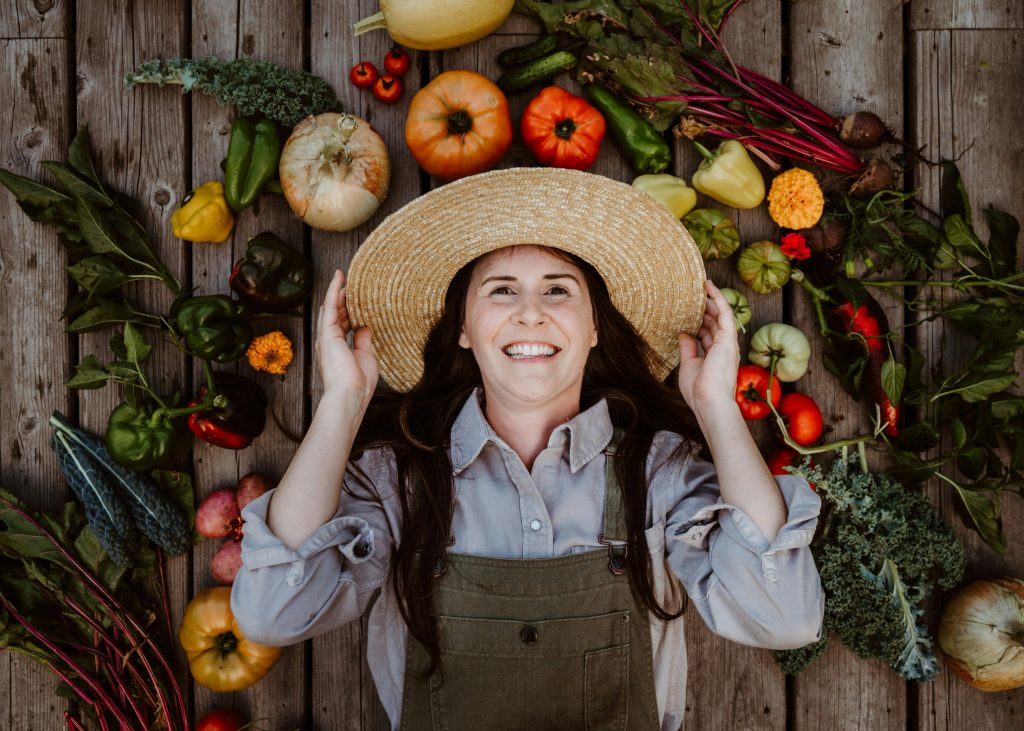Why Homegrown Vegetable Storage is Important
Proper vegetable storage for winter in Australia is essential to keep homegrown produce fresh and nutritious during the colder months. With Australia’s diverse climate, improper storage can lead to spoilage. By using the right methods—such as freezing, canning, or drying—you can extend the shelf life of your vegetables, reduce food waste, and enjoy your homegrown harvest all winter long.

Preparing Homegrown Vegetables for Winter Storage in Australia
Proper preparation is key to ensuring your homegrown vegetables stay fresh throughout the winter. Follow these essential steps to maximize the shelf life and quality of your harvest.
Cleaning and Drying Your Vegetables for Storage
Before storing your vegetables for winter, it’s important to clean and dry them properly. Begin by gently removing any soil or dirt from your produce using a soft brush or cloth. Avoid soaking vegetables in water, as excess moisture can lead to rot. After cleaning, thoroughly dry the vegetables with a clean towel or air dry them in a cool, dry area. This step helps prevent mould and mildew, ensuring your vegetables stay fresh longer during storage.

Trimming and Sorting Vegetables for Long-Term Storage
Trimming and sorting your vegetables is a crucial step for long-term winter storage. Remove any damaged, bruised, or overly ripe parts of the vegetables, as these can cause spoilage and affect the quality of the entire crop. For leafy vegetables, such as spinach or kale, remove any yellowing or wilting leaves. Sorting vegetables by size and type will also make it easier to store and monitor them during the winter months.
Best Methods for Storing Vegetables for Winter in Australia
Storing your vegetables properly ensures they last longer and retain their flavour during the colder months. Here are the best methods for preserving your homegrown produce.
| Vegetable Type | Best Storage Method |
| Root Vegetables (e.g., Potatoes, Carrots, Sweet Potatoes) | Store in cool, dark conditions. Use breathable containers like wooden crates or mesh bags for proper ventilation and moisture control. |
| Leafy Greens (e.g., Spinach, Kale) | Blanch and freeze. Blanch in boiling water, cool in ice, and store in airtight containers or freezer bags to maintain texture and nutrients. |
| Tomatoes and Peppers | Refrigerate for short-term storage or freeze for long-term storage. Ensure they are fully ripe and prepped before freezing to preserve flavour. |
| Cucumbers and Zucchini | Preserve by pickling. Use jars and follow a safe pickling process to store for long-term use. |
| Onions and Garlic | Hang in mesh bags or store in a cool, dry area with good airflow to prevent sprouting and mold growth. |
Freezing vs. Canning: Which is Better for Storing Vegetables in Winter?
Both freezing and canning are excellent methods for preserving vegetables for winter. Here’s a quick comparison of both techniques:
Freezing Vegetables for Winter Storage
Best Vegetables to Freeze: Ideal options include leafy greens (spinach, kale), carrots, peas, and corn.
Preparation Steps:
- Wash and peel vegetables (if necessary).
- Blanch in boiling water for a few minutes (to preserve colour and nutrients).
- Cool in ice water and dry thoroughly.
- Pack in airtight freezer bags or containers.
- Label and freeze.
Canning Vegetables for Winter
Step-by-Step Guide:
- Sterilise Jars: Wash jars and lids in hot, soapy water; sterilize by boiling or using a dishwasher.
- Prepare Vegetables: Wash, peel, and cut vegetables as needed.
- Fill Jars: Pack vegetables into sterilized jars, leaving some headspace.
- Process the Jars: Use a water bath or pressure canner based on the type of vegetable.
- Seal and Store: Ensure jars seal properly. Store in a cool, dark place.
Drying Vegetables for Winter: A Step-by-Step Guide
Drying is a great way to preserve vegetables for winter. Here’s how to do it effectively.
How to Use a Dehydrator for Vegetables
Best Vegetables to Dehydrate: Tomatoes, peppers, onions, and mushrooms.
Steps for Dehydrating:
- Wash and slice vegetables evenly.
- Place them on dehydrator trays.
- Set the dehydrator to the appropriate temperature (usually 55-70°C).
- Dry until crisp, checking every few hours.
Sun-Drying Vegetables in Australia
Pros: Sun-drying is cost-effective and energy-efficient.
Cons: Weather-dependent, may take longer.
Tips for Safe Sun-Drying:
- Use clean, flat surfaces or drying racks.
- Ensure vegetables are fully exposed to the sun for 6-8 hours.
- Cover vegetables with cheesecloth to keep insects away.
- Dry during hot, dry days for the best results.
Common Mistakes to Avoid When Storing Vegetables for Winter
Proper storage is key to preserving your homegrown vegetables. Avoid these common mistakes for the best results:
- Improper Temperature & Humidity: Ensure vegetables are stored in the right conditions for each type. Too much moisture or heat can cause spoilage.
- Poor Ventilation: Always provide adequate airflow to prevent mold and rot.
- Mixing Incompatible Vegetables: Some vegetables release gases that can affect others. Store them separately to maintain freshness.

Conclusion: Enjoy Your Homegrown Vegetables All Winter Long
By following the right storage methods, you can enjoy your homegrown vegetables throughout the winter months. Whether you choose freezing, canning, dehydrating, or sun-drying, each method offers a way to preserve the freshness and flavor of your harvest. Avoid common mistakes, and you’ll ensure a bountiful supply of nutritious vegetables all season long. Start implementing these tips today to make the most of your homegrown produce!
